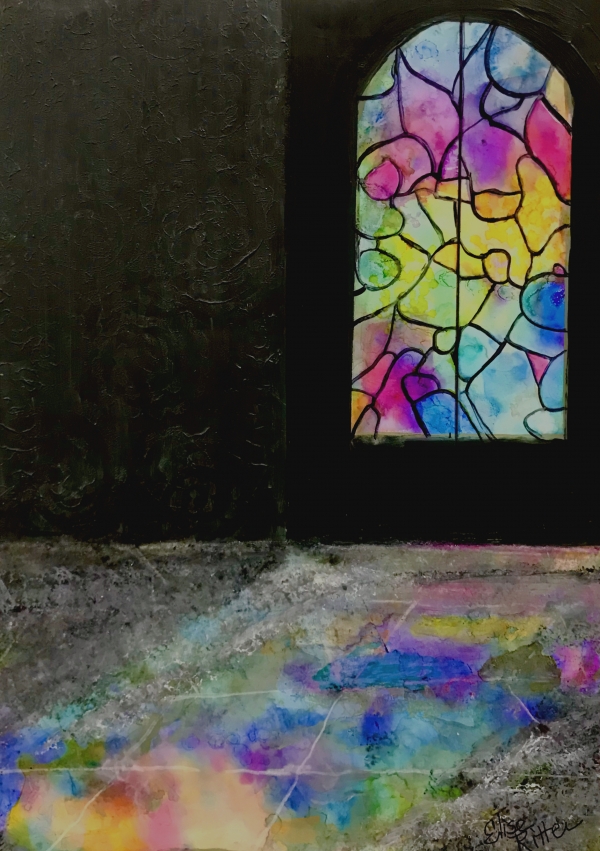Curatorial Statement

There is a crack, a crack in everything. / That's how the light gets in. ~ from "Anthem" by Leonard Cohen
While I am in the world, I am the light of the world. John 9:5
Ambient light — any form of naturally occurring or artificial light that creates the atmosphere or mood of a real or imagined environment — has long held the fascination of artists, among whom James Turrell, Sean Scully, and Monir Shahroudy Farmanfarmaian are notable explorers of the medium today.
Light’s spiritual, symbolic, and metaphorical connections to or meanings in the Bible, moreover, often find expression in paintings and other artistic media, not only illuminating scripture and our understanding of it but also opening to us God’s vision of and for our world and to such concepts as hope and faith, goodness and truth, knowledge and wisdom.
Figuring prominently in the five contemporary painters’ work offered in “Ambient Light: Real and Imagined”, the current virtual exhibition at St. Michael’s Episcopal Church, light as interpreted in watercolors, oils, acrylics, inks, and collage is used to investigate the properties of kinetic energy and movement (Elisabeth Hudgins), effects in nature, especially over water (Kat Jamieson), elusivity and luminous emergence (Linda Maldonado), spiritual darkness and rebirth (Elise Ritter), and healing (Deborah Taylor).
These light-oriented themes, although realized through the particular lens and filters and unique style of each artist, at times necessarily overlap. Reading the individual artist statements reveals, for example, that all of the exhibiting artists in one or another way investigate not only light’s physical or external presence but also, even if unconsciously, light’s mysterious spiritual or internal aspects. Repeated are such words and phrases as “light that shines forth to dispel a darkness”, “wonder”, “emerg[ence] from cosmic darkness”, “light as hope, a signal . . . to strengthen our spirits”, “rebirth”, and “hope and healing”.
Indeed, to personally engage with and represent light as source of inspiration and as subject, in ways that viewers themselves “see” the light, the artists must mediate its influence as well as allow it to guide them.
